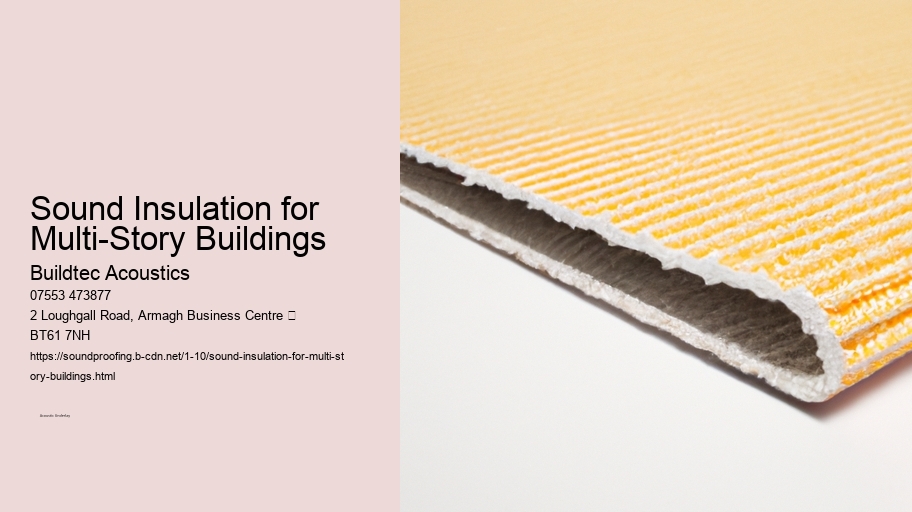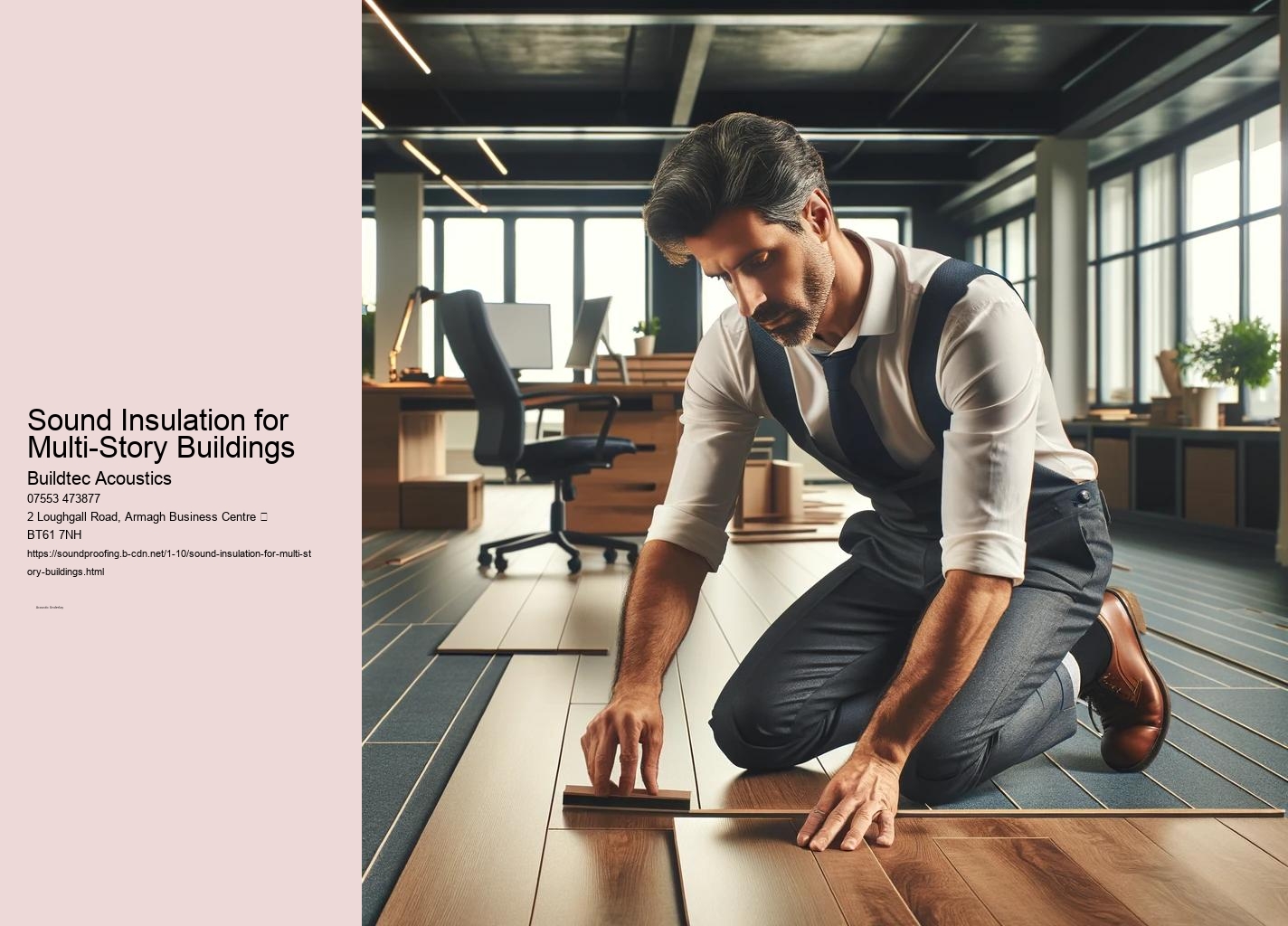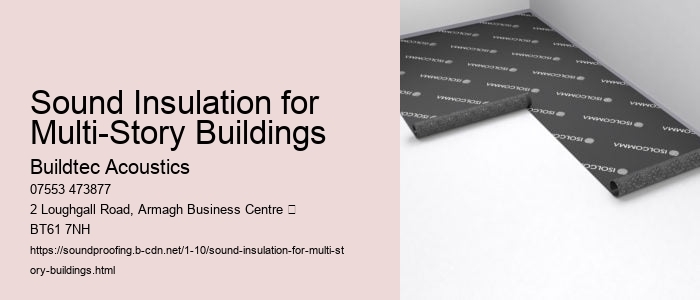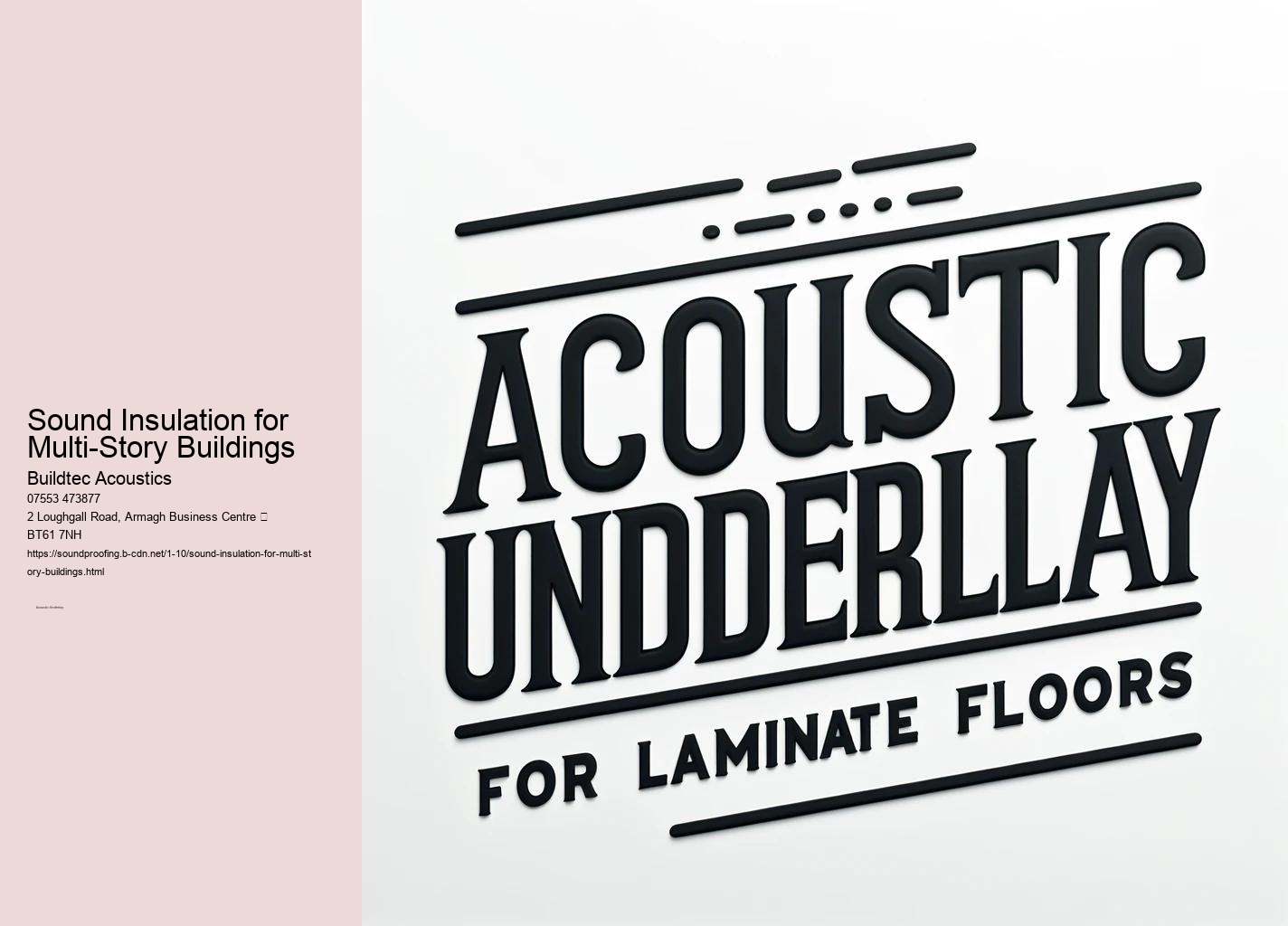

The compatibility with different floor finishes makes acoustic underlays an essential component of modern flooring design, creating a space that is both visually appealing and acoustically comfortable. With a wide variety of materials, including cork, foam, natural rubber, and recycled fibers, Buildtec Acoustics ensures an environmentally friendly and efficient product for every need. These products provide greater efficiency in both heating and noise control, ensuring comfort throughout the year. Looking to dampen noise in your office then use acoustic underlay under your floor.
Installing acoustic underlays beneath carpets in office spaces helps mitigate foot traffic noise and other disturbances, improving the room's dynamics. These underlays not only contribute to noise reduction but also enhance the thermal conductivity of the flooring, supporting efficient heat transfer in rooms.
Adhesive or double-sided tape can be used to secure the underlay in place, while ensuring tight seams between pieces to prevent gaps that could impact performance. Hard surfaces, such as hardwood and laminate, tend to amplify sounds like footsteps, resulting in unwanted echo and reverberation.
Acoustic underlays are also compatible with a range of flooring materials, including tiles, carpet, and wood. Acoustic underlays are also effective for vibration isolation, especially in areas where there are significant sources of vibration, such as near heating equipment or heavy appliances.
Hard surfaces, such as hardwood and laminate, often amplify sounds like footsteps, leading to unwanted echo and reverberation. Buildtec Acoustics offers underlays made from environmentally friendly materials, such as cork, recycled crumb rubber, and natural wool. The choice of acoustic underlay depends on the type of noise that needs to be managed.
Buildtec Acoustics offers a variety of acoustic underlays to meet different needs, including those designed for underfloor heating systems. These underlays not only contribute to noise reduction but also enhance thermal conductivity, promoting efficient heat transfer in the room.
Acoustic underlays are also effective for vibration isolation, particularly in areas with significant sources of vibration, such as near heating equipment or heavy appliances. In residential buildings, whether in a semi-detached house or an apartment, acoustic underlays are often installed under laminate flooring, hardwood, or carpets to reduce noise transmission through walls, ceilings, and stairs.
By reducing both airborne and impact noise, these underlays contribute to creating a peaceful environment, whether in the home, office, or commercial spaces. Acoustic underlays are also beneficial for renovation projects.
How acoustic underlays help manage different types of noise.

Posted by Francis Mckenna on
Exploring the thermal insulation benefits of acoustic underlays.

Posted by Francis Mckenna on
A simple guide to installing acoustic underlays for noise reduction.

Posted by Francis Mckenna on
By reducing both airborne and impact noise, these underlays help create a peaceful environment, whether at home, in the office, or in commercial buildings. These options promote sustainability by reducing reliance on virgin materials and minimizing overall pollution.


Impact noise results from vibrations caused by activities like walking, moving furniture, or using appliances such as washing machines. They are effective when used with materials like ceramic tiles or floating floors, enhancing both sound insulation and comfort underfoot. In rooms with underfloor heating, selecting an underlay with low thermal resistance ensures that heat can transfer efficiently without being obstructed by the soundproofing material.
Buildtec Acoustics offers underlays made from environmentally friendly materials, such as cork, recycled crumb rubber, and natural wool. These underlays not only contribute to noise reduction but also enhance thermal conductivity, supporting efficient heat transfer within the room.
During renovations, installing acoustic underlays can significantly enhance the acoustic properties of existing floors, whether in residential or commercial settings. Impact noise, such as footsteps on laminate flooring or vibrations from appliances, can be minimized using dense materials like natural rubber or foam.
Acoustic underlays are compatible with various flooring materials, including tiles, carpet, and wood. Environmental considerations are a key aspect of acoustic underlay design.
Hard surfaces, such as hardwood and laminate, tend to amplify sounds like footsteps, leading to unwanted echo and reverberation. Before installing an acoustic underlay, it is essential to ensure that the subfloor-whether concrete, particle board, or cement-is clean, level, and dry. subpoena Underlays help isolate vibrations, preventing them from being transmitted through the building structure and reducing the impact on adjacent rooms or units.
In conclusion, acoustic underlays from Buildtec Acoustics offer an effective solution for soundproofing floors, enhancing room acoustics, and improving the overall comfort of a space. Impact noise occurs from activities like walking, moving furniture, or using appliances such as washing machines, while airborne noise includes sounds like conversations, music, and television.
Installing an acoustic underlay beneath carpets in office spaces can help mitigate foot traffic noise and other disturbances, improving the room's dynamics. Airborne noise, such as music or conversations, can be reduced by choosing underlays with higher sound transmission class ratings.
Impact noise results from activities such as walking, moving furniture, or using appliances like washing machines, while airborne noise includes conversations, music, and television. Whether the flooring type is laminate, ceramic, or hardwood, Buildtec Acoustics provides underlays that are specifically engineered to match the selected material.


Installing an acoustic underlay beneath carpets in office settings can help reduce foot traffic noise and other disturbances, improving the overall room dynamics. For example, Tecsound underlays are often used beneath concrete or screed subfloors to provide effective soundproofing against vibration and noise. Whether the flooring type is laminate, ceramic, or hardwood, Buildtec Acoustics offers underlays that are specifically engineered to complement the chosen material.
Most underlays come in sheets or rolls and can be cut to size with simple tools like a utility knife. Acoustic underlays are also effective for vibration isolation, particularly in spaces with significant sources of vibration, such as near heating equipment or heavy appliances.
When discussing soundproofing options, acoustic underlays offer an efficient means to reduce noise pollution, enhance room acoustics, and create a comfortable environment. This allows consumers to achieve their preferred aesthetics without sacrificing soundproofing performance.
Acoustic underlays work by absorbing and dissipating sound energy, which helps reduce noise transmission through the floor. Buildtec Acoustics offers a variety of acoustic underlays to meet different needs, including those designed for underfloor heating systems.
Whether the flooring type is laminate, ceramic, or hardwood, Buildtec Acoustics offers underlays specifically designed to match the selected material. Acoustic underlays work by absorbing and dissipating sound energy, helping to control noise and reduce its transmission through flooring. Acoustic underlays work by absorbing and dissipating sound energy, which reduces noise transmission through floors.
By utilizing high-density materials like crumb rubber and cork, acoustic underlays effectively control noise, reducing its impact on occupants in adjacent rooms or units. During renovation, installing acoustic underlays can significantly improve the acoustic properties of existing floors, whether in a residential or commercial setting.
By reducing both airborne and impact noise, these underlays contribute to creating a peaceful environment, whether at home, in the office, or in a commercial building. Acoustic Underlay In summary, acoustic underlays from Buildtec Acoustics provide an effective solution for soundproofing floors, enhancing room acoustics, and improving overall comfort.
Impact noise, such as footsteps on laminate flooring or vibrations from a washing machine, can be minimized using dense materials like natural rubber or foam. During renovations, installing acoustic underlays can significantly improve the acoustic properties of existing floors, whether in residential or commercial settings.

Acoustic underlays are designed to help with vibration isolation by absorbing and dissipating vibrations caused by activities like walking or moving heavy appliances. This reduces the transmission of vibrations through the floor, improving overall comfort.
Many acoustic underlays are made from environmentally friendly materials, such as recycled crumb rubber, cork, and natural wool. These sustainable materials reduce the need for virgin resources and help lower overall pollution. Additionally, some products are LEED certified, supporting sustainable building practices.